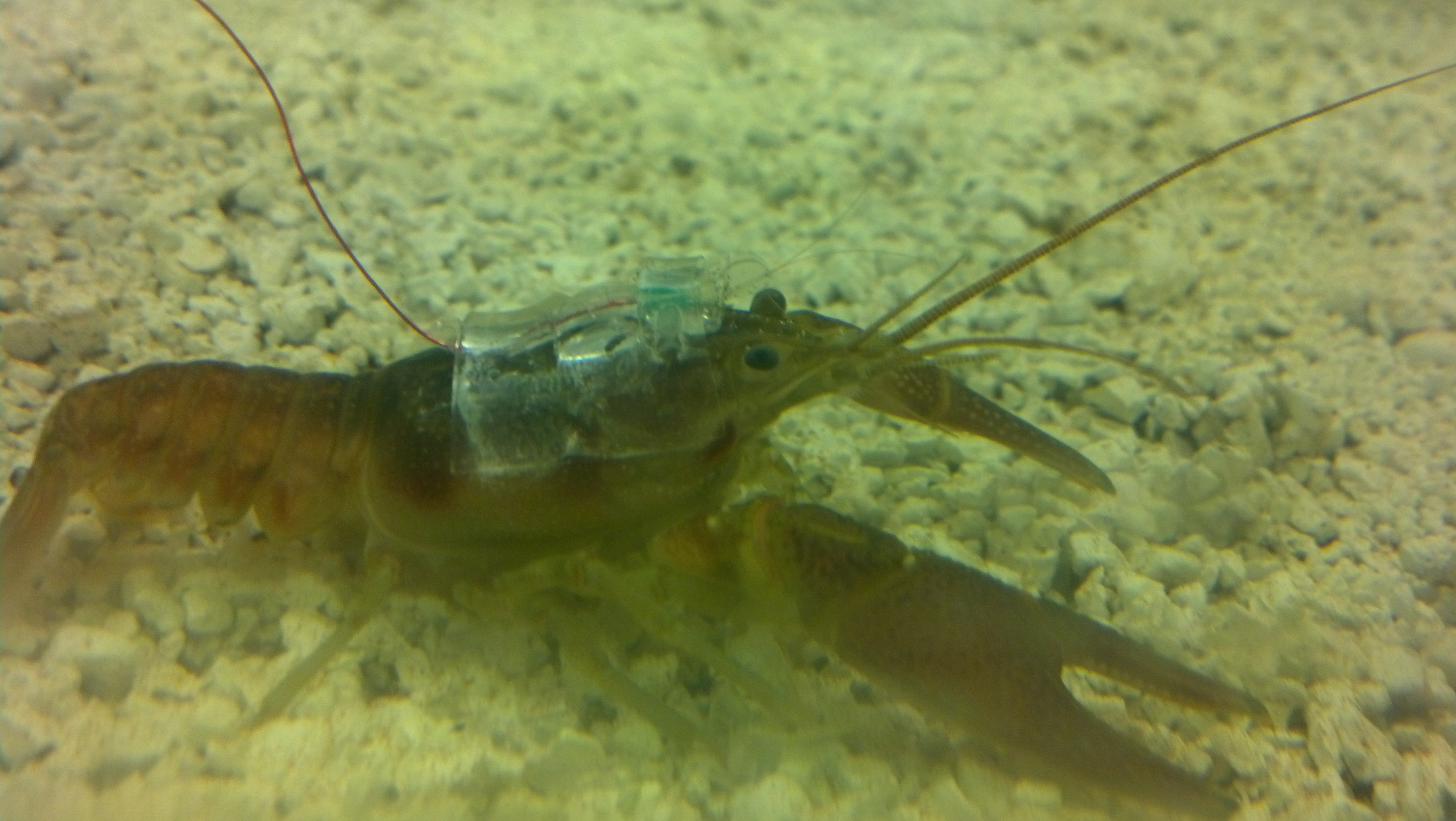Abstract:
Orientation within turbulent odor plumes occurs across a vast range of spatial and temporal scales. From salmon homing across featureless oceans to microbes forming reproductive spores, the extraction of spatial and temporal information from chemical cues is a common sensory phenomenon. Yet, given the difficulty of quantifying chemical cues at the spatial and temporal scales used by organisms, discovering what aspects of chemical cues controls orientation behavior has remain elusive. In this study, we place electrochemical sensors on the carapace of orienting crayfish and measure, with fast temporal rates and small spatial scales, the concentration fluctuations arriving at the olfactory appendages during orientation. The results of these studies show that the spatial aspects of orientation (turning and heading angles) are controlled by the temporal aspects of odor cues. This data has been published in this manuscript: Moore, P.A., Edwards, D., Jurcak-Detter, A., and Lahman, S. 2021. Spatial, but not temporal, aspects of orientation are controlled by the fine-scale distribution of chemical cues in turbulent odor plumes. JEB 224(7): https://doi.org/10.1242/jeb.240457
Data and Resources

| Field | Value |
|---|---|
| Publisher | |
| Modified | 2023-02-08 |
| Release Date | 2021-03-24 |
| Temporal Coverage | Monday, December 4, 2017 - 08:00 to Thursday, December 31, 2020 - 09:00 |
| Author | |
| Contact Name | Paul A. Moore |
| Contact Email | |
| Public Access Level | Public |
Publication Date:
Wednesday, March 24, 2021


![[Open Data]](https://assets.okfn.org/images/ok_buttons/od_80x15_blue.png)